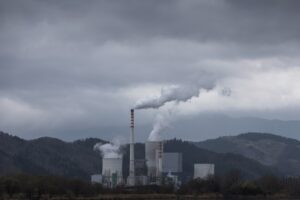On September 4, 2024, the EPA finalized its Reclassification of Major Sources as Area Sources Under Section 112 of the Clean Air Act (CAA) rule.
“This rule implements the [CAA] language that allows a ‘major source’ of hazardous air pollutants (HAP) to reclassify as an ‘area source’ after acting to limit emissions,” according to the final rule webpage. “Sources of persistent and bioaccumulative HAP listed in [CAA] section 112(c)(6) must continue to comply with certain major source emission standards under 112(d)(2) or standards under 112(d)(4) even if these sources reclassify as area sources.”
This action is expected to “promote transparency and accountability” when major sources reclassify as area sources under the National Emissions Standards for Hazardous Air Pollutants (NESHAP) program, according to an EPA Fact Sheet on the final rule.
- “Major sources” emit or have the potential to emit (PTE) 10 tons per year (tpy) or more of a single HAP or 25 tpy or more of a combination of HAPs.
- “Area sources” emit HAPs at levels below those thresholds.
Under the CAA, seven persistent and bioaccumulative HAPs are listed:
- Alkylated lead compounds
- Polycyclic organic matter (POM),
- Mercury
- Hexachlorobenzene
- Polychlorinated biphenyls (PCB)
- 2,3,7,8-tetrachlorodibenzofurans (TCDF)
- 2,3,7,8-tetrachlorodibenzo-p-dioxin (TCDD)
These pollutants have been designated as particularly harmful to human health. For example, mercury has been shown to cause brain damage in babies, and benzene, alkylated lead compounds, POM, PCBs, furans, and dioxins have been linked to cancer.
“More than half of the 187 HAPs listed by Congress in the CAA are known or suspected to cause cancer,” states a 2014 Air Toxics Report to Congress. “In addition, many HAPs can cause noncancer health effects, such as damage to the immune, respiratory, neurological, reproductive and developmental systems. Health concerns can result from both short‐term and long‐term exposure. HAPs can disperse locally, regionally, nationally or globally and after deposition can persist in the environment for long periods of time, bioaccumulate in the food chain, or both.”
The final rule also clarifies the notification requirements a reclassifying facility must meet and minor amendments to the reporting requirements for the submission of confidential business information (CBI). This rule applies to any source that chooses to reclassify after September 10, 2024.
“EPA’s action helps restore vital protections that limit toxic air pollution, helps people across the country breathe easier, and helps address a reckless loophole adopted by the Trump administration that enabled increases in industrial air toxic pollution,” said Noha Haggag, the Environmental Defense Fund’s (EDF) senior attorney, in an EDF news release. “The industrial air toxics addressed by EPA’s action today are some of the most dangerous in our lives and include pollution that causes cancer, brain damage in children, and early deaths.”
EPA regulations require “major” sources of HAPs to comply with protective pollution standards based on maximum achievable control technology (MACT).
Because MACT standards are so effective at reducing air pollution, industrial sources are often able to lower their emissions to levels that fall below the major source thresholds. When emissions fall below those thresholds, industrial facilities can request reclassification to smaller “area sources” of pollution.
“The ‘Once In, Always In’ policy required major industrial facilities to continue to comply with MACT standards after reclassification,” the EDF news release continues. “The policy was adopted in 1995 and worked for decades –until the Trump administration reversed it in 2018. The reversal created a loophole that could potentially be used by many industrial and petrochemical sources to increase their toxic pollution.
“The loophole would allow them to stop complying with MACT standards and ultimately increase their pollution to the level of the major source threshold. Reclassifying as an ‘area source’ could also make it easier for large industrial polluters to avoid rigorous monitoring, reporting, and recordkeeping requirements, making it more difficult track toxic pollution and ensure that the facilities are not exceeding major source thresholds.”
This final rule is “designed to prevent industrial facilities that emit certain hazardous pollutants from increasing their pollution levels when reclassifying from a ‘major source’ to an ‘area source,’” EDF notes.

